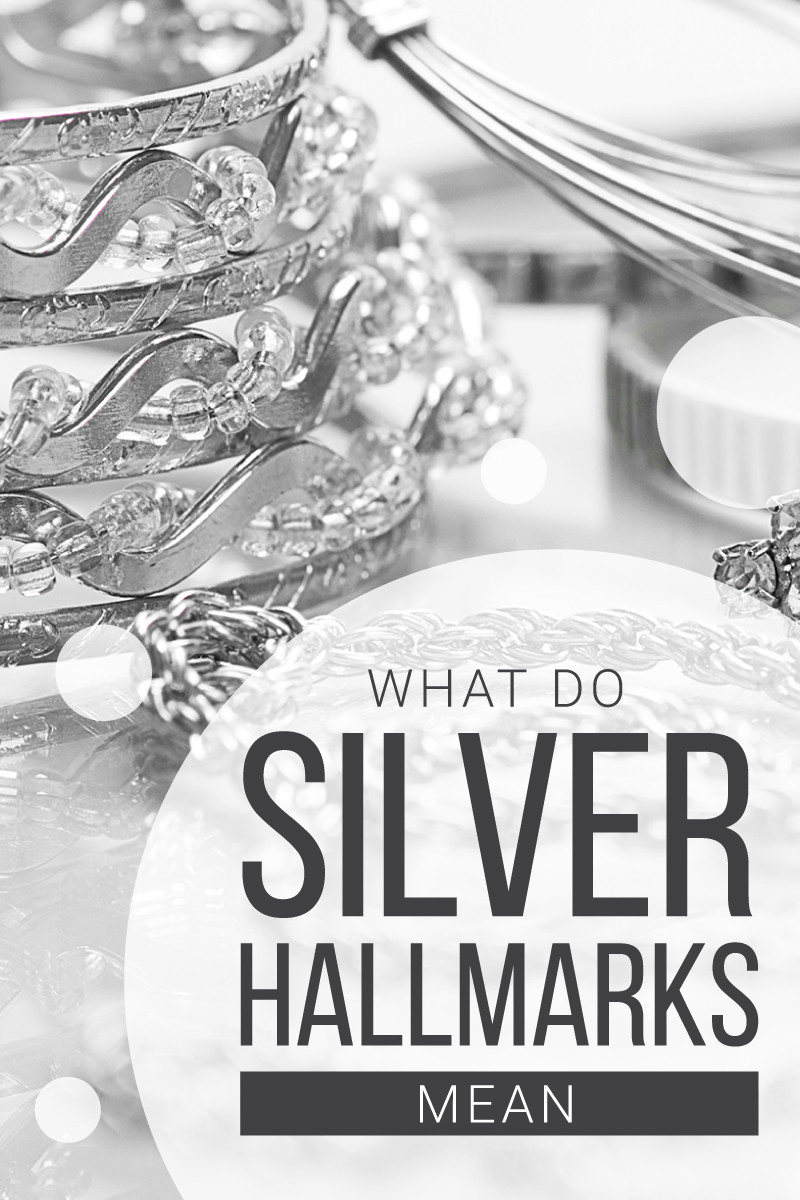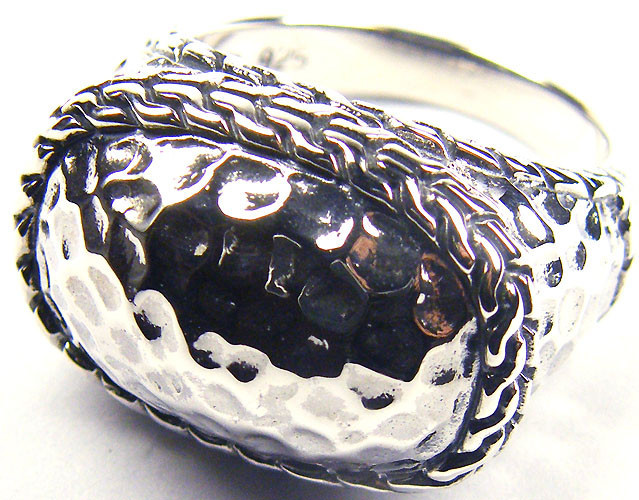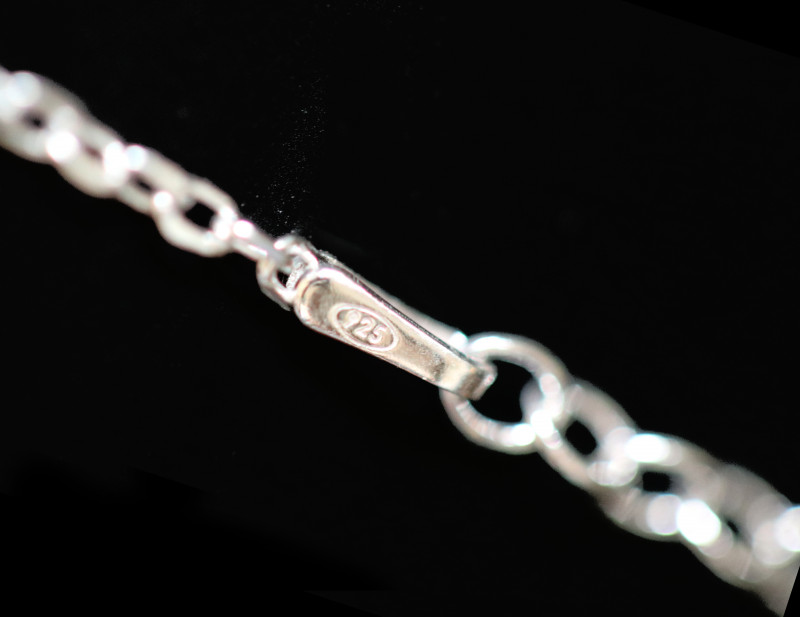
What Do Silver Hallmarks Mean?
 Have you ever wondered why there's a number stamped on the inside of your favorite shiny silver ring? Or maybe you've noticed an odd-looking symbol on the back of your silver lucky charm bracelet? In the jewelry world, these numbers and symbols are called hallmarks. What do silver hallmarks mean?
Have you ever wondered why there's a number stamped on the inside of your favorite shiny silver ring? Or maybe you've noticed an odd-looking symbol on the back of your silver lucky charm bracelet? In the jewelry world, these numbers and symbols are called hallmarks. What do silver hallmarks mean?
Jewelry makers use silver hallmarks to tell us essential info about your jewelry. Some marks indicate origin, while others represent purity.
Ready to decode silver jewelry stamps? Let's dive right in! But first: what's the purpose of silver hallmarks?
What Are Jewelry Hallmarks?
All precious jewelry metals, including silver and gold, have tiny hallmark imprints. One of the essential roles a hallmark plays is telling the wearer about the jewelry's quality.
Quality is first and foremost on our list when purchasing any piece of jewelry. Aside from 100% pure silver, most silver jewelry is mixed with a base metal called an alloy.
 Adding an alloy changes the silver's properties like hardness, color, and flexibility. The oh-so-popular Sterling silver, for example, contains 92.5% silver. What's the other 7.5%? If you guessed an alloy of mixed metals like copper, zinc, and palladium, you're correct!
Adding an alloy changes the silver's properties like hardness, color, and flexibility. The oh-so-popular Sterling silver, for example, contains 92.5% silver. What's the other 7.5%? If you guessed an alloy of mixed metals like copper, zinc, and palladium, you're correct!
But let's ditch the chemistry lesson for now and get back to the reason you're here. What do silver hallmarks mean?
What Do The Symbols Mean On Silver?
Great question. The short answer is, the symbols on silver mean a lot of different things. Purity is just one type of hallmark. If you've ever wondered whether or not your unique silver watch is a genuine antique rather than a dusty old knock-off, you'll want to learn how to read silver hallmarks.
So, how do you read silver hallmarks?
Fortunately, reading silver hallmarks is easy when you know what to look for. Below, we'll share popular stamps and teach you how to identify silver hallmarks.
 Silver purity marks (aka standard mark)
Silver purity marks (aka standard mark)
While you may own a diverse collection of silver jewelry, each piece will have a common feature: a purity hallmark. The purity mark, also known as a "standard mark," tells the buyer how much pure silver is in the jewelry.
Here's a list of the most common silver purity marks:
Sterling Silver, 92.5%, 925 - Sterling silver is the industry standard for a good reason, boasting beauty and affordability.
Britannia silver, 95.8%, 958 - Britannia silver is the middle ground in quality between Sterling and fine silver.
Fine silver, 100%, 1000 - This is the highest quality and rarest silver you can buy. If you stumble on grandma's old silver brooch with this silver hallmark, hold onto it!
Quick footnote: the hallmark names and numbers are interchangeable. In other words, your silver family heirloom might have the number "1000" stamped onto it, or only the phrase "fine silver" but, they both mean the same thing.
 Silver origin marks
Silver origin marks
Curious to know if your silver jewelry is British or American? Silversmiths use an array of symbols to tell us about the jewelry's origin.
Here's a list of popular hallmarks by country:
American - Perhaps the simplest of the silvers, American-made silver jewelry generally only carries the purity mark. Sometimes silver jewelry made in the USA will also include the maker's mark (more on that one shortly).
Mexican - In addition to the purity mark, Mexican silver jewelry often includes an obvious but helpful "Mexico" or "Made in Mexico" ("Hecho En Mexico" in Spanish) stamp. Mexican-made silver jewelry might also have hallmarks for the city name or region.
British (Scottish, Irish, English) - Did you know that British silver hallmarks date back over 700 years to medieval times? Because they are antiques, the industry considers British jewelry hallmarks the most complex. That's why they have the standard quality mark, an origin mark (town and country), maker's mark, and a date letter — that's a lot of marks to decode!
Scandinavian (Norwegian, Danish, Swedish, etc.) - Each country is a little different, but all Scandinavian silver has a purity mark. Swedish silver jewelry includes the town and date, while Norwegian and Danish silversmiths often include their signature stamp instead.
European (French, German, Austrian, Italian, etc.) - Are you noticing a pattern here? Like those mentioned above, European silversmiths use the purity mark to indicate the silver content while also adding a unique signature mark, date letter, or town mark.
 Date marks vs. date letters
Date marks vs. date letters
There are few accessories as timeless as vintage silver, but how can you spot a classic? Peek around for a date mark, which silversmiths stamp on genuine silver jewelry. If you find a four-digit number like 1901 on your silver, you'll know instantly when it was made. Now that's vintage!
If you're into British antique silver jewelry, you've probably noticed an alphabet letter imprint. What does that letter mean, and why is it in a fancy font? That stamp is a date letter, the British version of a date mark.
Date letters can be a little confusing, so bear with us. Sometimes, the jewelry maker will use a single letter as a shorthand code instead of a four-digit number to indicate the origin date.
Just when you thought you'd decoded date marks, we throw a curveball at you!
Why is it so complicated? For one, a single letter takes up less space than four numbers. And secondly, date letters also tell us about location. So, using a date letter is like killing the ol' proverbial two birds with one stone, a silver stone in this case!
Silver maker's mark
The 'maker's mark' or signature stamp is another common silver hallmark that tells us who made your silver, like these antique Tiffany & Co. hallmarks!
How Do I Tell If My Silver Is The Real Deal?
What if you don't see a hallmark on your jewelry? Costume jewelry and silver imposters won't have a hallmark. Avoid disappointment by looking for that industry-standard 925 Sterling silver hallmark before purchasing any silver jewelry.
 Of course, if a stamp stumps you, a quick internet search for "American hallmarks" or "antique British hallmarks" will set you on the right track. Also, there are many free apps and silver hallmark charts with pictures to help you visually identify most stamps on the spot.
Of course, if a stamp stumps you, a quick internet search for "American hallmarks" or "antique British hallmarks" will set you on the right track. Also, there are many free apps and silver hallmark charts with pictures to help you visually identify most stamps on the spot.
If in doubt, take your silver jewelry to a trusted jeweler for identification. In addition to verifying your silver's authenticity, they'll help you identify rare silver hallmarks.
Buy Silver That Meets Your Stamp Of Approval
As you've learned, silver hallmarks tell us vital details about your valuable silver jewelry, including the purity, quality, origin, date, manufacturer, and maker.
Now that you're an expert at identifying silver hallmarks browse our collection of high-quality sterling silver to put your newfound savvy skills to good use — and snag a lovely piece to flaunt while you're at it!
Search the Fashion Encyclopedia
Related Auctions
Related Articles
You may think that there is only one type of silver used in jewelry, but there are actually different types used to in the jewelry industry.
10th Mar 2020
Favourite Gemstone Earring? Different gemstone earrings may provide power to different factors of an individuals character. Whether the person believes or, not from any mythological and paranormal characteristics and force associated with these gemstones,
22nd Apr 2019
A simple guide for understanding gold hallmarks, how to identify them and the methods for testing gold purity.
13th Jun 2019
Latest Articles
Titanium is a popular jewelry metal known for being lightweight, durable, and affordable. Learn all about titanium, how it compares to similar metals, and the pros and cons of titanium jewelry.
7th Feb 2023
Learn all about tungsten jewelry - from its history and uses to its durability and care. By the end of our guide, you’ll know if tungsten is right for you!
7th Feb 2023
Thinking about adding some timeless white gold jewelry to your fine accessories collection? Here’s all there is to know about sophisticated white gold!
29th Jan 2023




